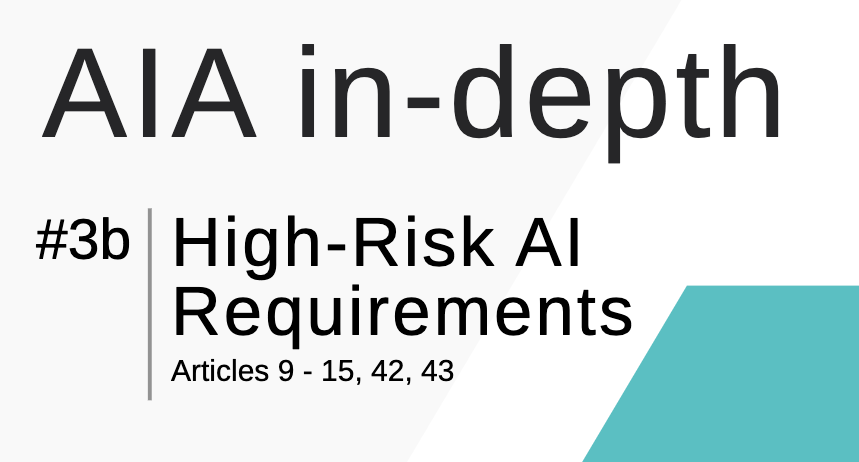AIA in-depth #3b | High-Risk AI Requirements
This report is the fourth in a series of in-depth analyses of the European Commission proposal for a Regulation for Artificial Intelligence (AIA).
In this paper, which is the fourth in a series, we will dive deeper into the main elements of Chapter 2 of Title III of the AIA: The Requirements for High- Risk AI (articles 9 – 15, 42, 43).
Main findings
1 The AIA versus the Ethics Guidelines for Trustworthy AI:
- Many but not all requirements of the Ethics Guidelines have been fully incorporated in the AIA
- ‘Missing’ requirements are: human autonomy, privacy, explainability, non-discrimination, environmental well-being, societal well-being
2 The requirements should be seen not only in light of the intended purpose but also of the reasonably foreseeable use of the AI system
3 Include the obligation to involve relevant stakeholders in the development and review phases of the risk management system and promote multi-disciplinarity in the design and development of AI
4 Main adjustments to the requirements of articles 10-15:
- Delete para. 5 of article 10 (bias monitoring, detection and correction)
- Delete art. 42(1) (presumption of conformity with para. 4 of article 10)
- Apply the recommendations for logging to all high-risk AI
- Define affectee(s), natural or legal persons affected by high-risk AI
- Add requirements to ensure explainability of AI decisions towards affectees and the right to request an explanation by affectees
- Add measures to ensure independence and protection of person(s) endowed with exercising human oversight
- Include requirements regarding model quality, such as justifiable and reasonable parameters and features, and generalisability
5 Strengthen the requirements:
- Add requirements to protect human autonomy, privacy, non-discrimination, societal well-being, democracy, the rule of law and the environment
- Add a fiduciary duty for to act in the interest of affectees
- Have certain decisions remain the ultimate prerogative of humans
- Have all high-risk AI systems third party assessed



